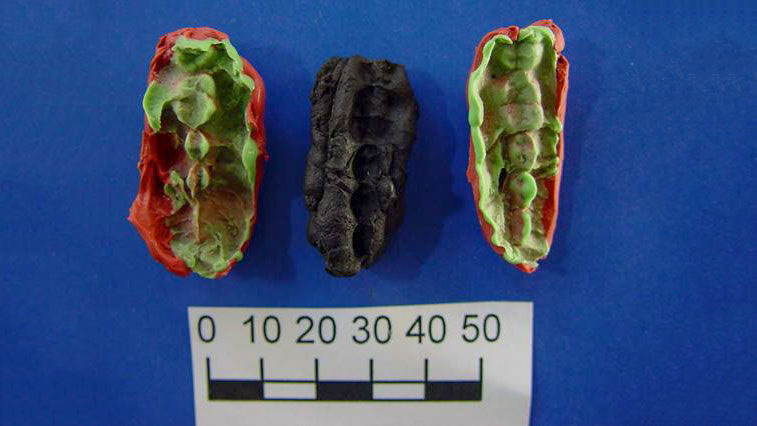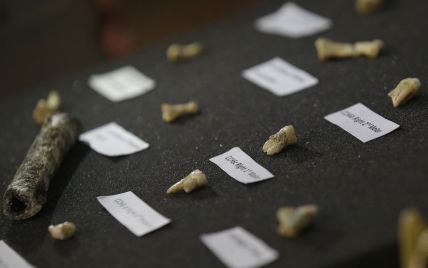New Zealand anthropologists have discovered evidence that ancient people used a natural “chewing gum” to make glue for hunting.
Birch bark in Sweden is an important material used by ancient people to create a special glue through chewing like modern gum.
 Researchers have just discovered “ancient chewing gum”.
Researchers have just discovered “ancient chewing gum”.
This special glue is called “ancient gum” by researchers because it can also preserve ancient people’s tooth marks and traces of DNA for thousands of years.
Ancient people living in Scandinavia were the first to know how to use special glue.
According to analysis of collected specimens, anthropologists determined that the people who made glue from birch bark were both men and women. There may be children as young as 5 years old.
“It’s possible to get DNA from something people chewed thousands of years ago,” says Lisa Matisoo-Smith, a molecular anthropologist at the University of Otago in Dunedin, New Zealand.
Before that, in the late 1980s, a team of Swedish archaeologists excavated a hole in an archaeological site called Huswise Klev in western Sweden.
Here, they discovered more than 100 pieces of black coal, the size of a finger, marked with distinct tooth marks. Chemical analysis revealed these were adhesives derived from plant resins.
Anders Gotherstrom, co-author of the study published in the journal Scientific Reports on January 23, said that hunter-gatherer people most likely chewed plastic to use it as glue when assembling things. tools and weapons.
He said: “This is a very possible hypothesis. Of course it is also possible that they chewed them just because they liked them or thought they had some medicinal purpose”.

Researchers determined ancient toolmakers heated distilled birch sap with a fire to soften it, chewed pieces of it into a gummy state, then used it as flakes. Glue attaches grinding stones to wooden or bone shafts to make weapons and tools.
This is the first time archaeologists have found DNA from Scandinavian hunter-gatherers, in clear association with Neolithic tools. It shows that people in Scandinavia 10,000 years ago were using much more modern stone-cutting methods than the remaining populations in Eastern Europe.
It also shows that Europe is not the only cradle of Stone Age technology. When prehistoric people migrated from the east, specifically from Russia, they also possessed amazing technology. Two groups of people who met not only exchanged genes with each other, but also technologies that helped their lives develop together.
On a smaller scale, the DNA samples in the three candy residues also revealed some things about human life and culture 10,000 years ago. The tooth marks in the gum are baby teeth, showing that stone tool making was not entirely the work of adults. Two of the three gene samples were from women, suggesting that tool making was also not an exclusively male job.
A previous 2019 study of pieces of gum mapped the genetics of people who chewed it.
 Where prehistoric Scandinavian chewing gum was found.
Where prehistoric Scandinavian chewing gum was found.
In the development of DNA sequencing technology, archaeologists have found ancient human genes in many surprising locations. Earlier this year, a clay pipe used for smoking also revealed the genome of an enslaved woman who once lived in Maryland.
Natalija Kashuba and her colleagues say that gum, tree resin and similar materials found around the world are a well-preserved source of prehistoric human DNA, even in places where their bones are not. still exists.
That will be invaluable evidence for us, modern people, to look at to reconstruct the lives that once took place of our ancestors.
| In 2019, scientists reconstructed an image of a woman based on DNA extracted from a 5,700-year-old piece of chewing gum. She may have dark skin, brown hair and blue eyes, and is from Syltholm on Lolland – a Danish island in the Baltic Sea. Researchers nicknamed the woman “Lola”.
At the time, researchers said it was the first time an entire ancient human genome had been obtained from anything other than human bones. |





